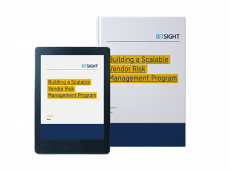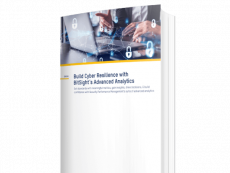Security | Threat Detection | Cyberattacks | DevSecOps | Compliance
BitSight
What is Mobile Application Protection and How To Enforce It
With the rise of remote work and shadow IT, more devices and apps (both sanctioned and unsanctioned) are connecting to your organization’s network. Today, there are approximately five million mobile apps currently in circulation: approximately three million for Android and two million for iOS. That’s great for productivity, but less than ideal when it comes to security.
What Is Cybersecurity Compliance? An Industry Guide
If you operate in specific sectors, cybersecurity maturity is more than a best practice, it’s a regulatory requirement. These regulations are complex and constantly changing. To help you better understand your organization's regulatory environment and the standards and controls they stipulate, let's break down key cyber compliance regulations by industry.
OFAC and Vendor Management: What You Need to Know
Are you aware of the risks involved in doing business with parties sanctioned by the Office of Financial Assets Control (OFAC)? How does this impact your vendor management? OFAC stands for Office of Foreign Assets Control within the Treasury Department. As part of the U.S. government measure to enforce anti-money laundering/counter terrorism financing regulations, OFAC oversees economic and trade sanctions. These sanctions are against countries, individuals, or outfits engaged in disreputable actions.
What is Vulnerability Monitoring? Benefits, Tools, and Best Practices
In today’s ever changing cyber risk landscape, your organization must adopt a vulnerability management framework to control exposure and remediate risks in a timely manner. In an earlier blog, we explained the vulnerability management process. Here, we explore a key part of that process – vulnerability monitoring – in greater depth.
8 Dangerous Ransomware Examples
The threat of ransomware has been ever present in 2020, especially within the high-stakes industries like healthcare and those involved in the election. According to Verizon's 2019 Data Breach Investigations Report, 24% of security incidents that involved specific malware functionality exhibited ransomware functionality.
5 Keys to Building a Scalable Vendor Risk Management Program
Build Cyber Resilience with BitSight's Advanced Analytics
How to Scale a Cybersecurity Program Across the Expanding Attack Surface
New security vulnerabilities are emerging every day. The number of new disclosed cyber vulnerabilities jumped 25 percent in 2022, and the number of known exploited vulnerabilities—ones observed to be exploited by malicious actors in the wild—nearly doubled from 2021 to 2022. Remediating vulnerabilities rapidly and effectively reduces the likelihood of your organization becoming the victim of a cyber attack. Consider.
Creating Trust in an Insecure World: Strategies for Cybersecurity Leaders in the Age of Increasing Vulnerabilities
Vulnerabilities are on the rise, and it's not just the number that's growing; the severity of these vulnerabilities is also increasing. Cybercriminals are taking advantage of these vulnerabilities to launch sophisticated attacks, leading to data breaches, ransomware, and other devastating cyber incidents.





